Har Karkom is a mystery. While it makes no doubt it was a major paleolithic worship place,
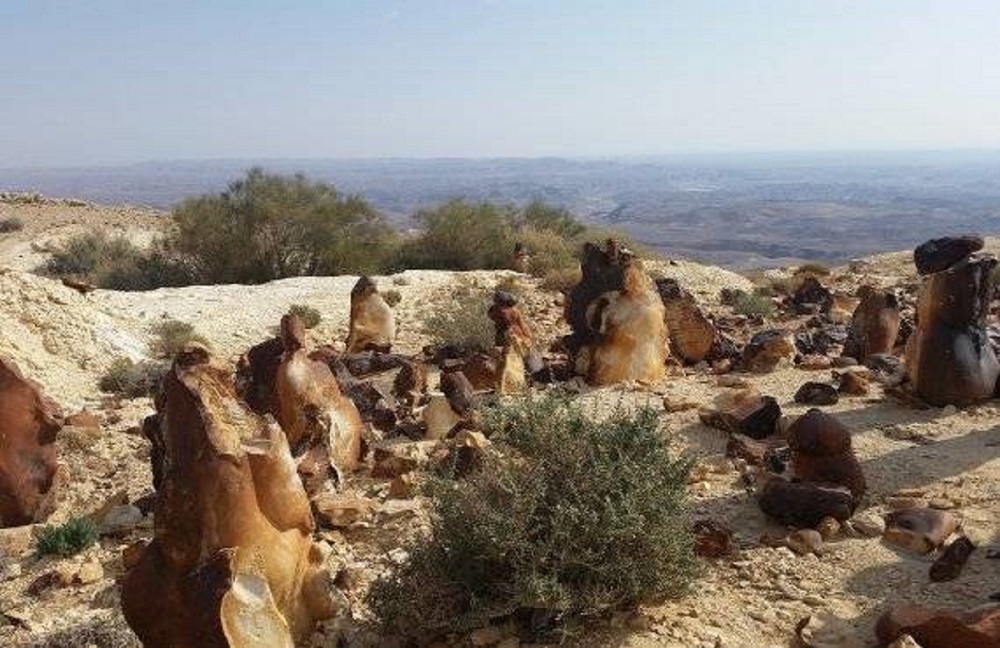
some believe it to be the Mountain of God, one of about 12 contendants to the title of Mount Sinai.
Among them, Ygal Granot, a tour guide leaving in our village, who happened to be on Mount Karkoum at the time of the winter solstice and witnessed for the first time what he thought looked very much like the Bible description of the burning bush (a fire that doesn’t burn up). About 10 years ago, it was popularized by Dr Haim Berger who appeared on TV to talk about the phenomenon and the theory he had developed around. Since then, around the winter solstice, a growing number of jeeps travel in a long caravan in order to witness the ‘burning bush’,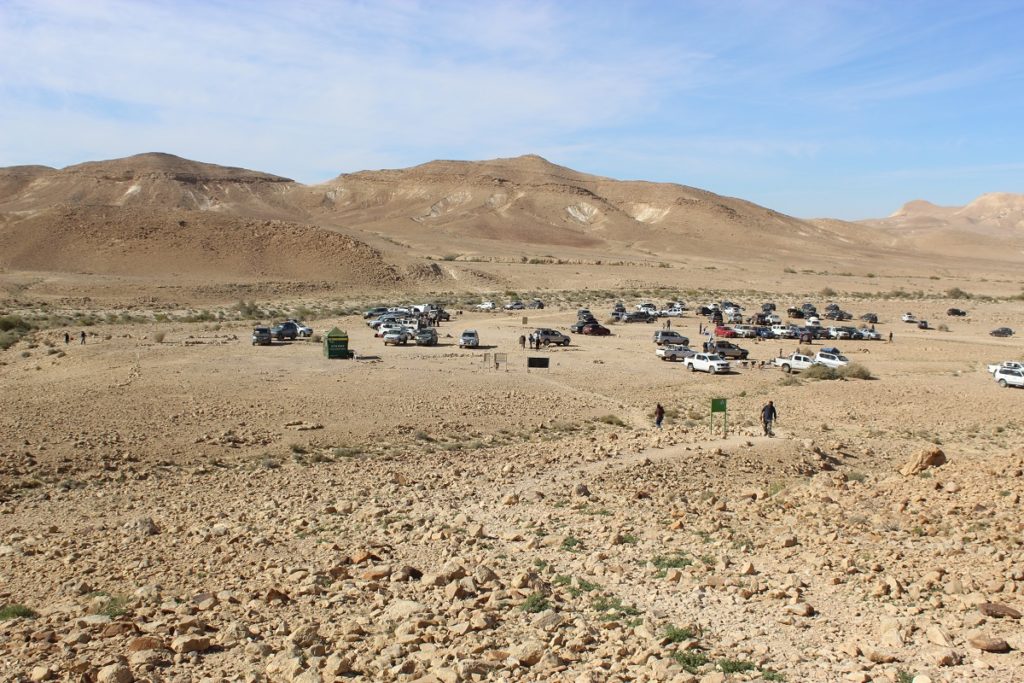
but trust me, there is a lot more to Har Karkom than just it and if there is a place in the Negev I wouldn’t advise to go to without a knowledgeable guide, this is definitely Har Karkom.
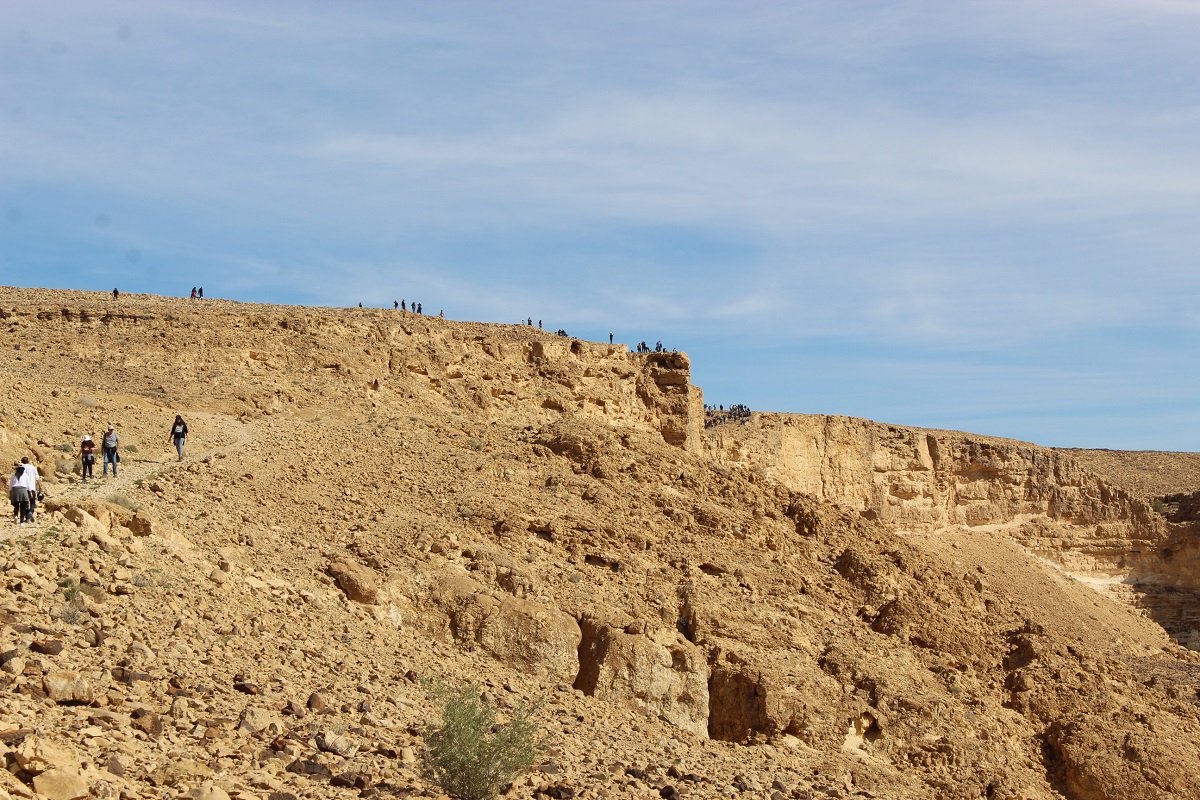
Let’s be honest, unless you find yourself by chance at the right place at the right time, or unless you feel so compelled to go there after reading this blog post that you decide to plan a special trip to Israel around a visit to Har Karkom, there is very little chance you will be able to make the trip. Not only it is a long and arduous drive, which requests a jeep and good 4*4 driving skills, it is also right in the middle of a fire zone and therefore is only open to the public on weekends and holidays (three times a year only, during Souccot, Hanouka and Pessach Jewish Holiday, road 10 along the Egyptian border is open which cuts the long journey by about half).
It all started with Professor Emmanuel Anati
When David Ben Gurion came to settle in Sde Boker in the 50’s, he decided that he wanted no stone of the Negev unturned in the search for archeological artifacts. He sent a team of archeologists to do the work, among them, the young Anati who was then a student at Jerusalem University. Anati had heard of a mountain that the Bedouins called Jebel Ideid (Mountain of Celebration). On arriving he encountered the parallel paths which indicated great numbers of people walking at the same time! What went on in this place, he asked himself which was far from known human habitations, far from arterial roads, without water sources, without minerals to mine… Once he had ascended the mesa which runs for eight kilometers he found the answer; a huge concentration of rock engraving and other stones disposed in such a way as to suggest this place had been used for a cult of some kind. He decided on the spot that Har Karkom would become his life’s work. On his return to Italy he created a Research Center dedicated to unlocking the mysteries of this remarkable site. In the interim Jebel Ideid was renamed Mt Karkom, karkom being the name of a white crocus that flowers at the start of the rainy season. He has identified 1500 places of cult some of them more than 20,000 years old.
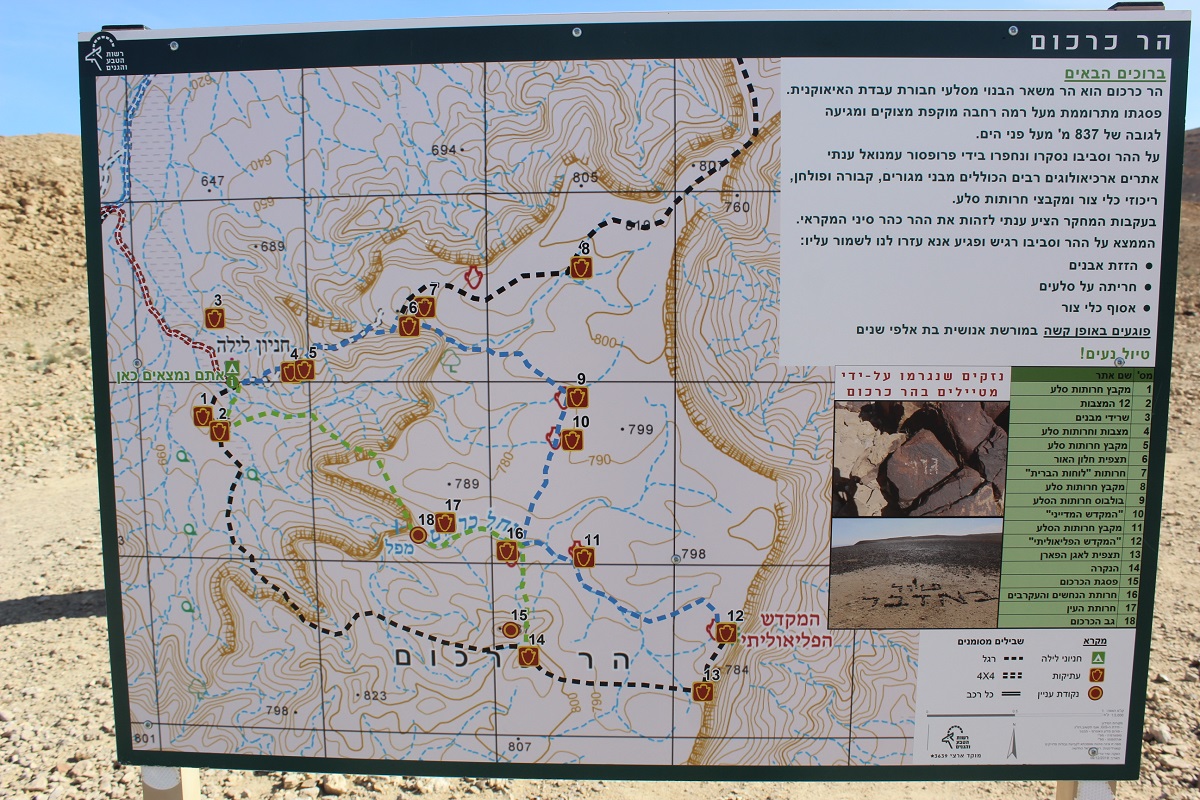
It is likely to be the oldest known in the Middle East. Little by little, he came to the conclusion that he was digging on the Montain of God. You can find many details about his research on his website. He didn’t get much traction among other professionals as his findings would imply that the Exodus occurred close to a thousand year before it is generally thought (as the place was most active around 2500 BC and was abandoned around 1900 BC when it is generally thought that the Exodus occurred sometime around 1600-1200 BC.
To begin to grasp the complexities of Har Karkom one has to separate myth from history and faith from fact. If you believe that Moses was a mythological invention then this place won’t interest you. If you believe that G-d spoke to Moses and gave him the two tablets then this place will offend you. But if you believe that the Moses saga is rooted in historical fact, you need to come and see Har Karkom for yourself.
The timeline begins 20,000 years ago when Paleolithic communities held this mountain to be sacred. Parallel paths (in places 16 deep) on the southern and eastern approaches to the mountain suggest coordinated movements of thousands of humans and camels.
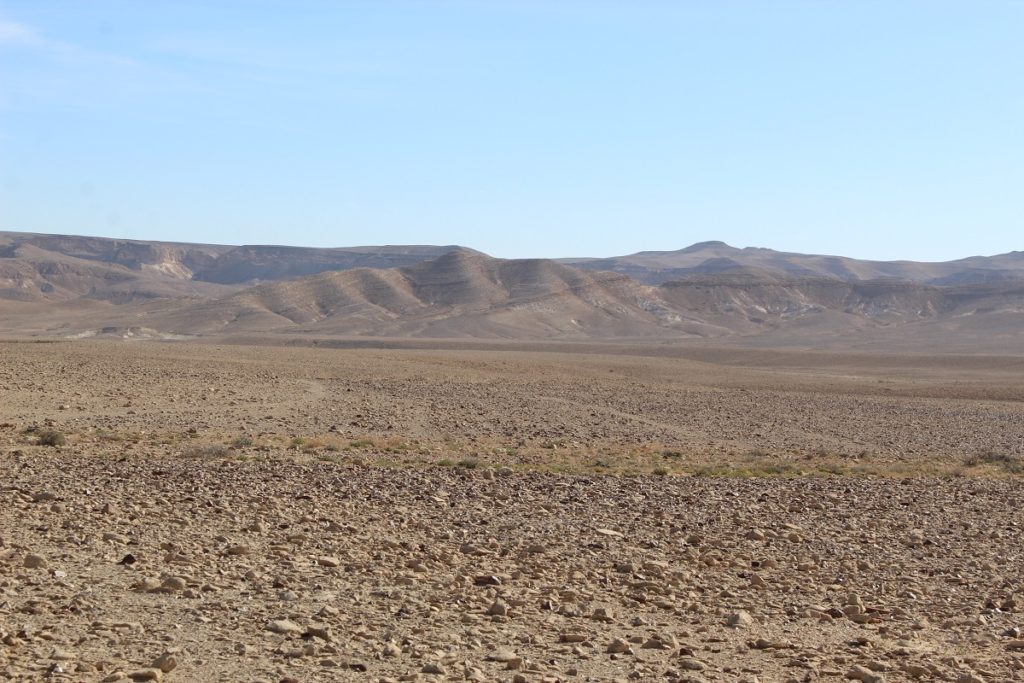
Sacred inscriptions and rock drawings in their tens of thousands line the route. What drew these numbers to Har Karkom?
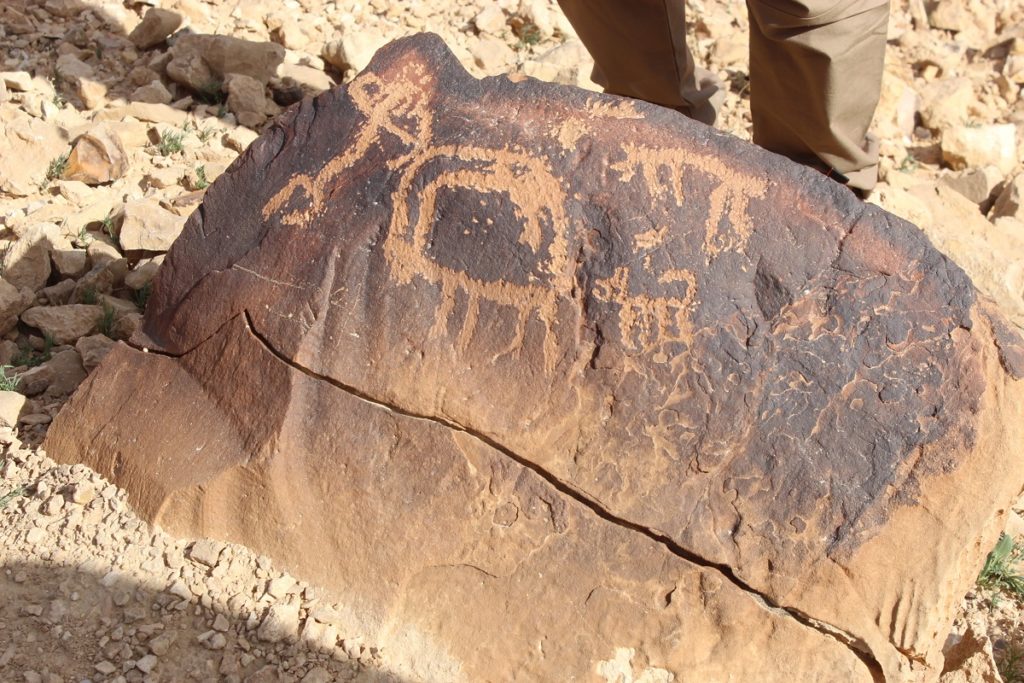
The answer, according to Dr Haim Berger, is a phenomenon that occurs during the winter solstice and which can be observed only when standing on a certain spot at midday during the winter solstice. Suddenly a bright light emanates from the cliff in front of you at a distance of about 200 meters.
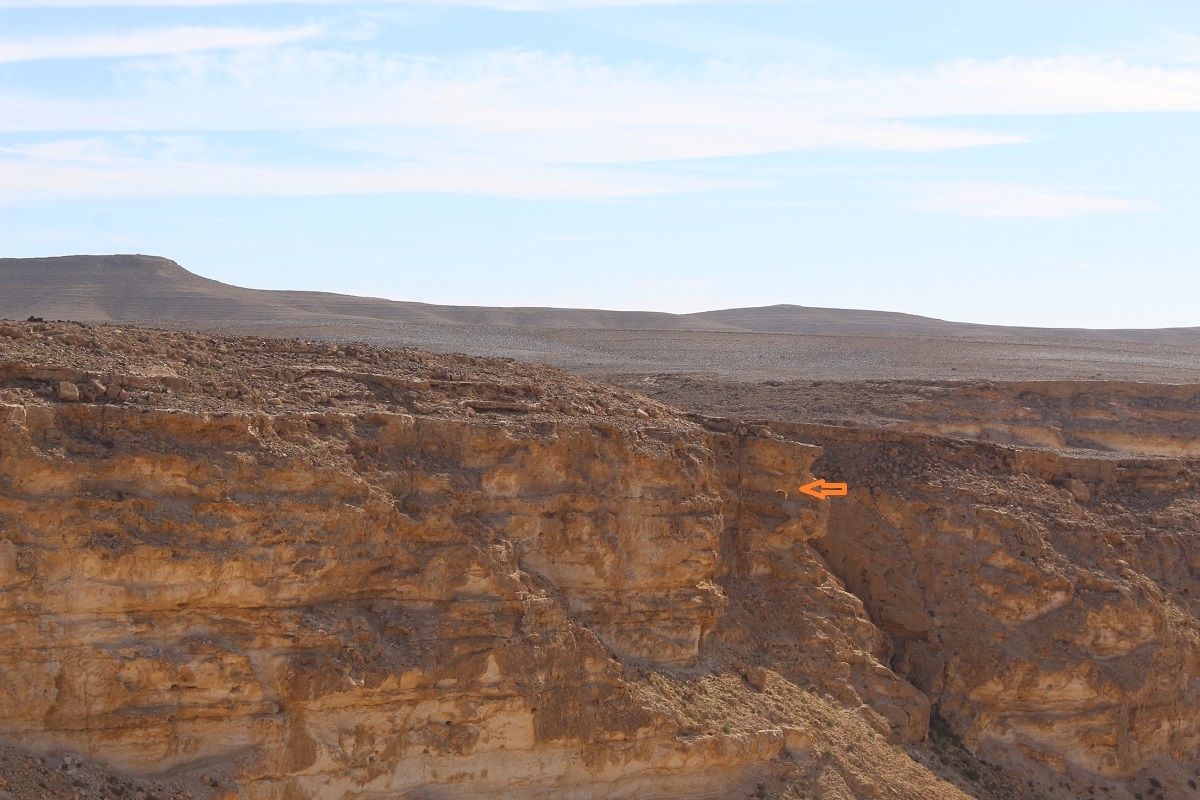
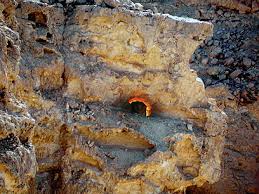
Today we know that this bright light is the result of sunlight illuminating a limestone cave through a hidden aperture in its roof, but in ancient times this was not understood, or if it was understood by a few it was hidden from the masses. The significance of this light ‘miracle’ in the depth of winter to ancient peoples was the promise of spring, renewal and growth. Only if they ascended the mountain in sufficient numbers and prayed to their dieties with sufficient intensity, would that light appear. Only after seeing the light with their own eyes could they return to their communities in the knowledge that spring and summer would follow. In this manner Har Karkom held the power of life or death over the people of the region for 17,000 years.
Moses and the Ten Commandments
Dr Haim Berger reconstructs:
There was a movement of humanity from Egypt to Canaan from 1700 – 1200 BCE. This is known from Egyptian inscriptions and archaeological evidence at Har Karkom. That body of humanity identified as 12 tribes distinct in their beliefs from the Egyptians and surrounding pagan tribes. On their passage north from Egypt they encountered Har Karkom and, discovering the winter miracle of light, appropriated it to themselves, renaming it ‘the burning bush’ and reassigning it to their monotheistic belief system. They inscribed on a rock a map for worshippers to find the correct observation point and this is the origin of the mehorah.
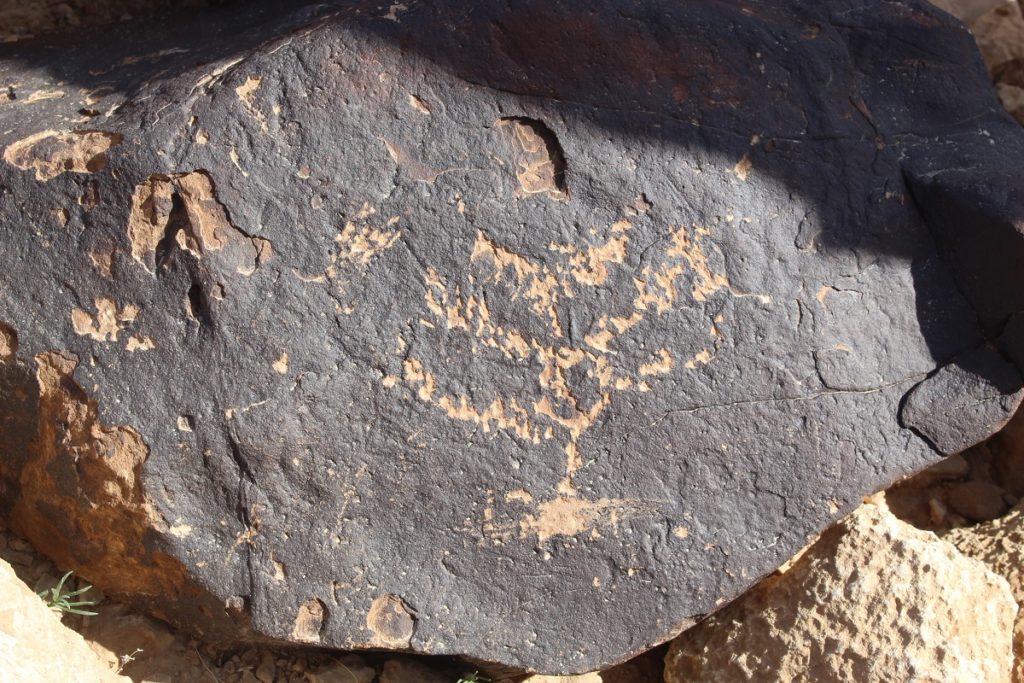
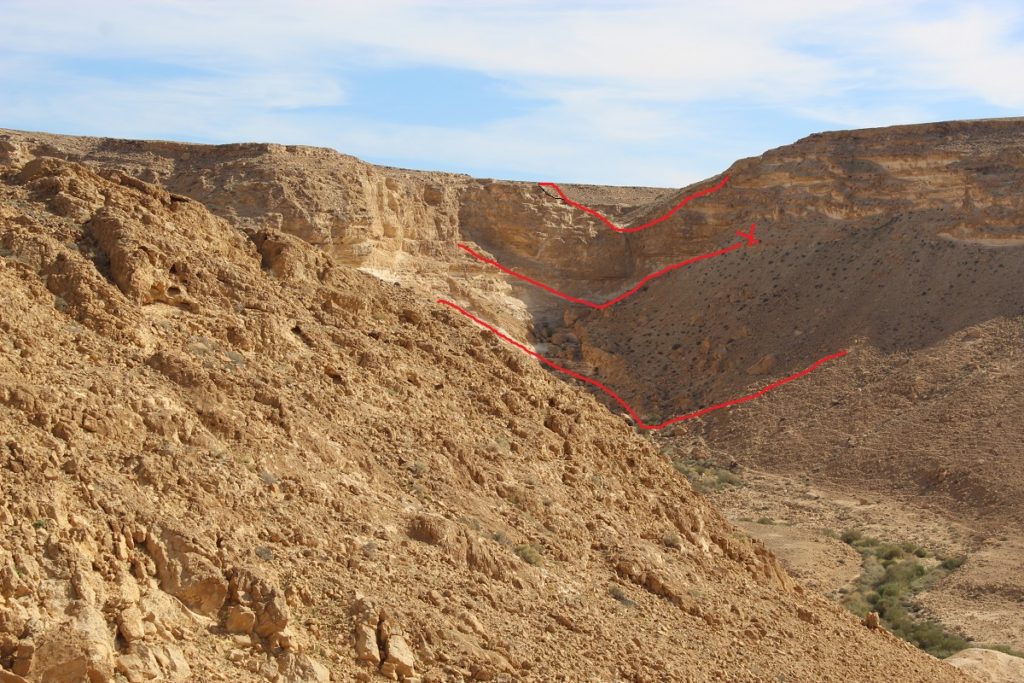
During their sojourn on the mountain which may have encompassed multiple generations, they devised a moral code encapsulated in ten basic laws carved on two tablets of stone; throughout the mountain are found pictures of twin tablets.
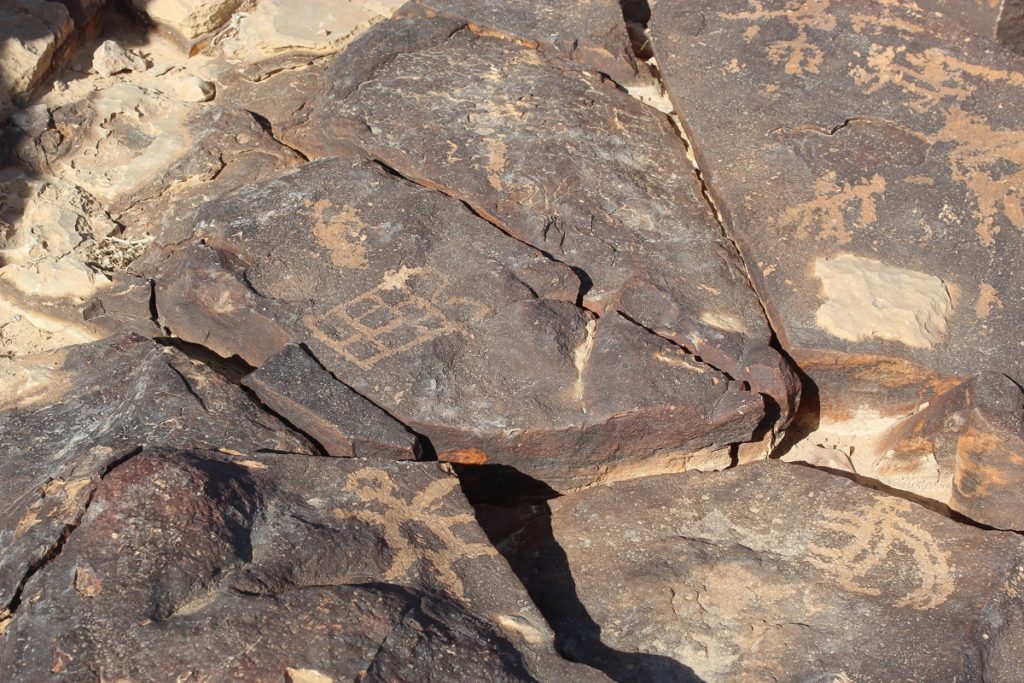
At the base of the mountain on the southern approach are twelve pillars in two rows with a pagan sacrificial alter exactly as it appears in Exodus 24. According to Dr Berger, the figure of Moses is surely a composite of many leaders but much of the Book of Exodus is anchored in real events and those events took place here on Har Karkom.
To some people this will read like a conspiracy theory: A rich concoction of unrelated facts lashed together to promote a wild idea. And to others like myself it is a poetic affirmation of the Bible as history, and a validation of the origins of the Jewish people.
How to get there
If your purpose in visiting Har Karkom is to put Dr. Berger’s ideas to the test then:
- You are obliged to take him as your guide, accept no imitations
- You must visit within twenty days either side of the winter solstice
- You must prepare for an arduous 4 hour jeep ride across rough terrain followed by a two-hour hike. This makes it a 10 hour excursion
During the 4 hour approach Dr Berger describes what it was like to live in this place through history and what the mountain meant to the ancients in their daily lives. He will take you to every significant archeological site, and introduce you to the rock inscriptions which support his ideas. He is a charming and charismatic guide who invites argument and opposition for the good of a lively discussion.
Dr Haim Berger – Negev Jeep – +972545343797
email: negevjeep@gmail.com
This post is also available in:
 Français
Français
Author: Marion Krivine
French owner of Krivine Guesthouse in Midreshet Ben Gurion, together with my British husband John. A little piece of european greenery in the heart of the Negev Highlands, Israel. I have set out on this journey in order to provide our guests with the most accurate, up-to-date and comprehensive guide of the area. View all posts by Marion Krivine

